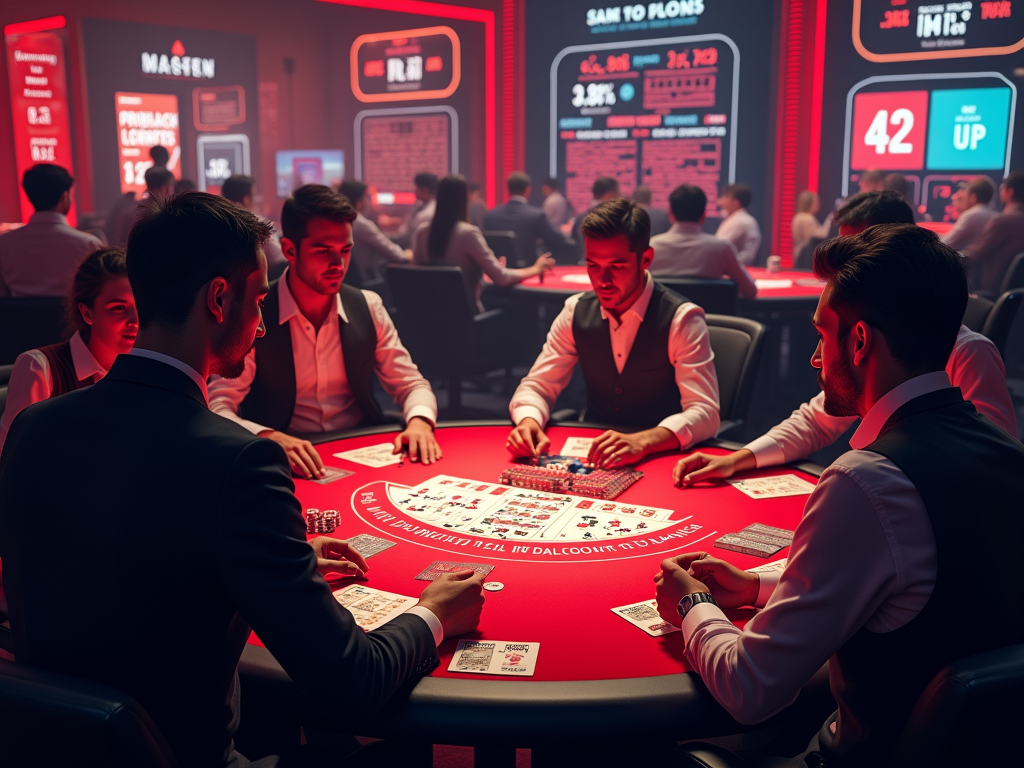Reducing the House Edge in Blackjack Through Strategy
Blackjack offers players a rare opportunity to reduce the house edge to 0.5% through skilled play and mathematical strategy. Each card dealt shifts future probabilities, letting players make calculated decisions that boost their winning chances.
Key Takeaways:
- The house edge in blackjack can be as low as 0.5% when using optimal basic strategy, compared to 2-15% for other casino games.
- Players have a 4.83% chance of getting a natural blackjack and a 30.8% probability of drawing a 10-value card initially.
- Dealer bust rates vary significantly based on their upcard, from 42% with a 6 showing to just 17-20% with a 10 or Ace.
- Rule variations like 3:2 vs 6:5 payouts and number of decks used can substantially impact the house edge.
- Card removal effects create shifting probabilities throughout play, particularly impacting the odds of premium hands in single-deck games.
I focus on leveraging statistical analysis to improve game outcomes. Each dealt card creates a new mathematical scenario that demands strategic adaptation. By understanding these shifting probabilities and their impact on optimal play, I can maintain the lowest possible house edge in casino gaming.
The mathematical foundation of blackjack sets it apart from pure chance-based games. This blend of skill, strategy, and probability makes blackjack an ideal choice for players seeking better odds through informed decision-making.
Why Blackjack Has the Best Odds in the Casino
Understanding the House Edge
I’ve found that blackjack offers players exceptional winning potential with its remarkably low house edge of approximately 0.5% when using optimal basic strategy. This makes it stand out from other casino games, where the house advantage often ranges from 2% to 15%. Your decisions at the table directly influence these odds, making blackjack a game of skill rather than pure chance.
The probability calculations in blackjack are unique because it’s the only casino game where removing cards from play affects the odds of future hands. Each card dealt changes the composition of the remaining deck, shifting the probabilities for subsequent hands. This dynamic nature creates opportunities for skilled players to adjust their strategy based on the cards they’ve seen.
Breaking Down the Probabilities
Let’s examine the key probability figures that make blackjack so appealing:
- The chance of getting a natural blackjack sits at 4.83%
- Players have a 30.8% probability of drawing a 10-value card on their initial deal
- The likelihood of busting varies based on your starting hand and the dealer’s up card
- Double down opportunities can increase your expected return by up to 100% in favorable situations
Understanding card values and their frequencies is crucial for making optimal decisions. For instance, knowing that nearly one-third of the cards in the deck are worth 10 points helps inform your splitting and doubling down choices. This mathematical foundation lets you make decisions that maximize your chances of winning while minimizing potential losses.
The game’s relatively low house edge means that with proper strategy, you can extend your playing time and increase your chances of walking away ahead. I’ve noticed that many players don’t realize that blackjack’s house edge can be further reduced through card counting, though casinos actively discourage this practice.
The combination of skill-based play and favorable odds has made blackjack the go-to game for mathematically minded players. By understanding these probabilities and implementing basic strategy, you can take advantage of one of the best betting opportunities available in any casino.
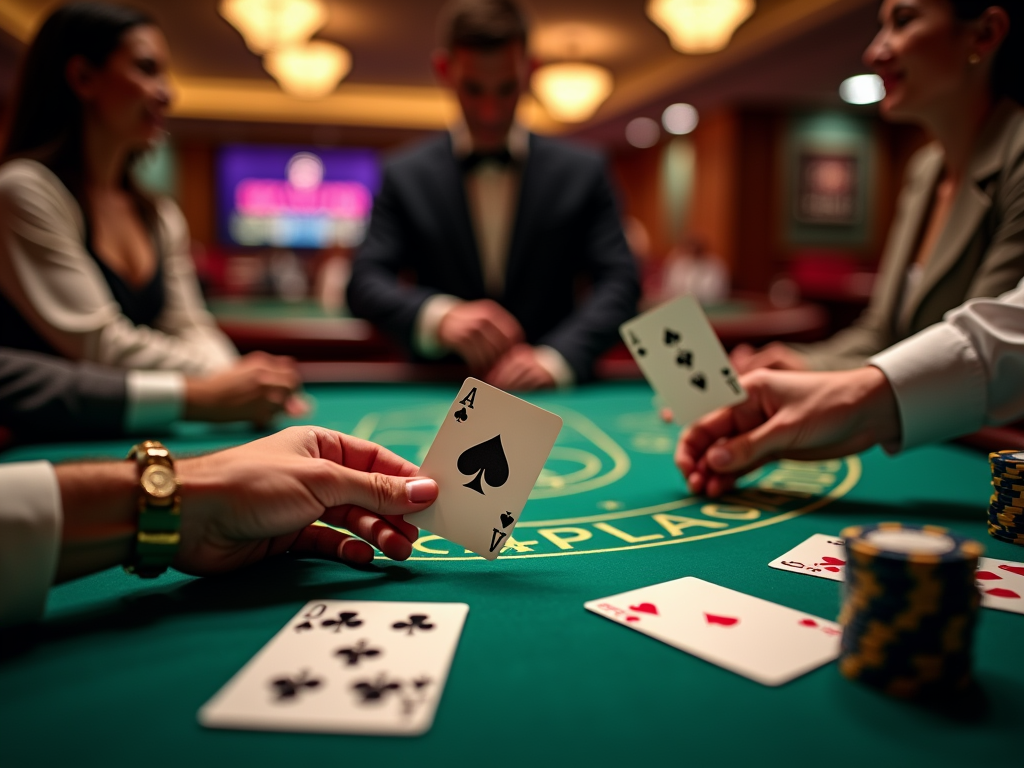
The Mathematics of Basic Strategy
Basic strategy decisions in blackjack aren’t random – they’re backed by solid mathematical calculations that help determine the smartest play for every possible hand. Let me break down how these probabilities shape the correct decisions at the table.
Probability Calculations in Action
The mathematics behind hitting and standing choices stems from analyzing the dealer’s upcard against your hand total. I’ve found that understanding bust probabilities is crucial – when your hand totals 11 or less, there’s zero chance of busting on your next hit. This mathematical certainty forms the foundation of many basic strategy moves in blackjack strategy fundamentals.
The house gains its edge primarily because players must act first. Even if the dealer eventually busts, you’ll lose if you’ve already busted your hand. This sequence creates an inherent disadvantage that requires strategic counterplay based on mathematical probability.
Impact of Mathematical Decision-Making
Computer simulations have crunched the numbers on millions of hands to determine the mathematically optimal play for every possible combination. These calculations consider:
- The probability of improving your hand with a hit
- The likelihood of the dealer busting based on their upcard
- The chances of winning with your current total
- The risk/reward ratio of doubling down or splitting pairs
The math is clear – if you ignore basic blackjack strategy and terminology, you’ll face a house edge that’s 1.5-2% higher than necessary. This means losing money significantly faster than a player who follows the mathematically proven basic strategy.
I’ve seen countless players rely on hunches or intuition, but the numbers don’t lie. Every deviation from basic strategy increases the house’s mathematical advantage. The calculations show that even when a play feels wrong, following the mathematically correct decision will save money over time.
Each hand represents a unique probability puzzle, where the optimal solution has already been determined through rigorous mathematical analysis. By sticking to these pre-calculated decisions, you’ll play each hand with the lowest possible house edge.
How Different Rules Impact Your Odds
Key Rule Variations That Matter
The most impactful rule in blackjack is the payout ratio for a natural blackjack. I’ve found that casinos offering 3:2 payouts give players significantly better odds compared to those paying 6:5. This single rule creates a hefty 1.39% difference in the house edge — that’s money staying in your pocket over time when playing at 3:2 tables. You can learn more about these crucial payouts in my complete guide to blackjack card values and terminology.
The number of decks used directly affects your chances of winning. Single-deck games typically give players better odds, with a 0.5-0.6% lower house edge compared to 8-deck games. However, single-deck games are becoming harder to find in modern casinos.
Here are other essential rules that change your odds:
- Dealer hitting on soft 17 increases the house edge by 0.22%
- Late surrender option decreases the house edge by 0.08%
- Double after split rules can shift the edge significantly in your favor
- Re-splitting aces improves player odds
- Dealer peeking for blackjack reduces unnecessary losses
I recommend focusing on mastering basic blackjack strategy while seeking out games with player-friendly rules. The combination of proper strategy and favorable rules can reduce the house edge to less than 0.5% under optimal conditions.
These rule variations explain why experienced players carefully choose their tables. Even small changes in the house edge add up over hundreds of hands. A skilled player at a table with favorable rules can maintain a much stronger position against the house compared to playing at tables with restrictive rules.
Casinos often mix favorable and unfavorable rules at the same table. For example, they might offer late surrender but require dealers to hit on soft 17. That’s why understanding how each rule impacts the overall odds helps you make smarter decisions about where to play.
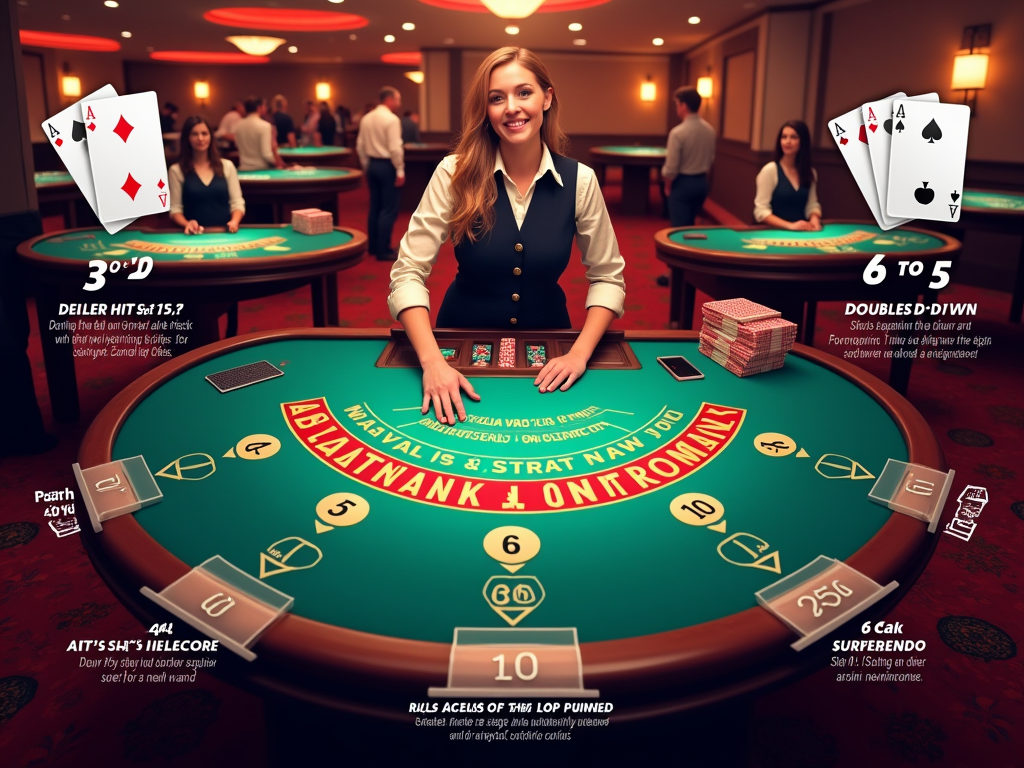
Critical Dealer Probabilities to Know
I’ve found that understanding dealer probabilities creates a significant edge when making strategic decisions in blackjack strategy and gameplay. The dealer’s upcard gives crucial insight into their likelihood of busting, which directly impacts your winning chances.
Dealer Bust Percentages
The dealer’s bust rates vary significantly based on their visible upcard. Here are the key probabilities you need to know when facing different dealer upcards:
- Weak Cards (2-6): These cards give players the best advantage. The dealer busts 35% with a 2, 37% with a 3, 40% with a 4, and 42% with both 5 and 6.
- Strong Cards (7-Ace): The dealer’s chances of busting drop sharply. A 7 brings a 26% bust rate, 8 shows 24%, 9 carries 23%, while 10s and Aces have the lowest bust rates at 17-20%.
Fixed Rules and Their Impact
The dealer’s fixed rules create consistent patterns that inform basic blackjack strategy and terminology. They must hit on 16 or below and stand on hard 17 or above. This predictability lets players make mathematically optimal decisions.
The house rules about whether dealers hit or stand on soft 17 (H17 vs. S17) change these probabilities slightly. In H17 games, dealers bust more often with an Ace upcard, while S17 rules give players a minor mathematical advantage in certain situations.
I’ve noticed these probabilities remain consistent across different blackjack variations, making them essential knowledge for any serious player. By factoring in these bust rates with your hand’s potential outcomes, you can make smarter decisions about hitting, standing, or doubling down.
The higher bust rates of dealer upcards 2-6 explain why basic strategy often recommends standing on lower totals against these cards. Conversely, when dealers show 7 through Ace, their lower bust rates mean players typically need stronger hands to win.
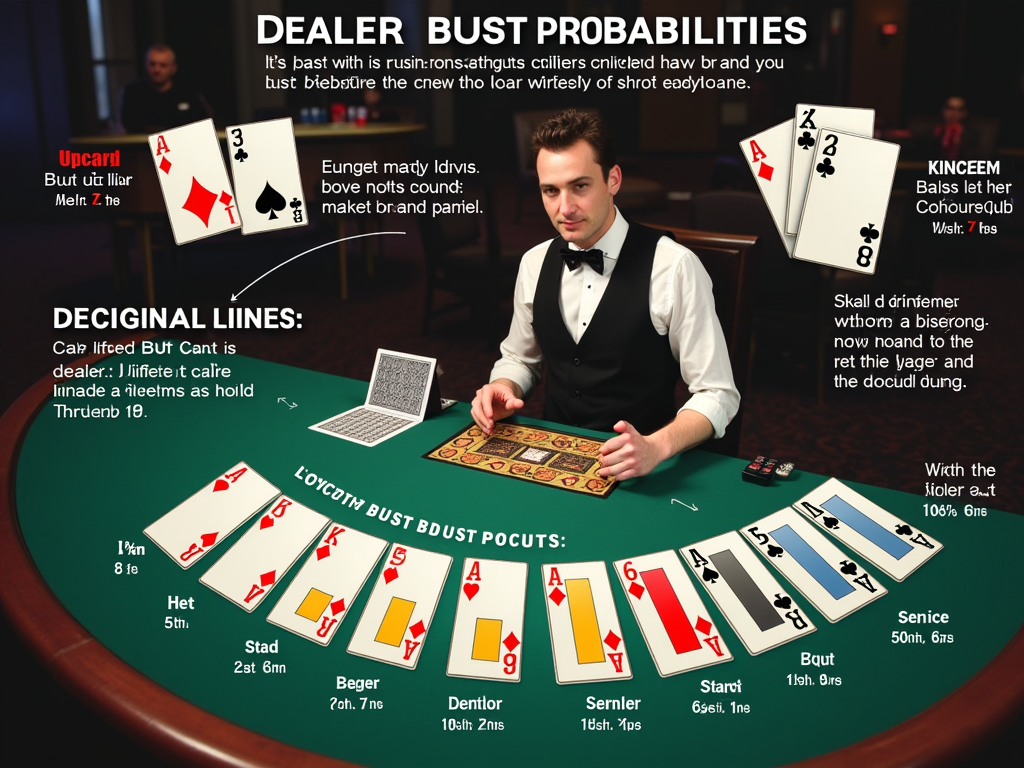
Card Counting and Advanced Probability
Card counting isn’t just about memorizing cards – it’s a mathematical system that tracks the ratio of valuable cards left in the deck. I’ll help you understand how this powerful technique can shift the odds in blackjack strategy and gameplay.
Understanding Card Values and Ratios
The fundamental principle behind card counting lies in tracking specific card values in blackjack – particularly high-value cards (10s, face cards, and Aces) versus low-value cards (2 through 6). When more high-value cards remain in the deck, players gain an advantage because:
- There’s a better chance of hitting blackjack, which pays 3:2
- Players have improved odds when doubling down
- The dealer is more likely to bust when hitting on soft hands
Impact on Playing Decisions
Card counting directly influences both betting and playing decisions. As the count becomes more positive (indicating more high cards remaining), I’d suggest:
- Increasing bet sizes to capitalize on favorable conditions
- Standing on certain marginal hands where you’d normally hit
- Taking insurance more often when the count justifies it
- Being more aggressive with doubles and splits
Modern casinos have implemented multiple countermeasures like continuous shuffling machines and using multiple decks to make counting more challenging. But understanding these probability concepts remains valuable for any serious player. The technique works because blackjack represents dependent probability events – meaning each card dealt affects the probability of future hands, unlike independent events such as roulette spins.
The real power comes from combining sound counting techniques with proper basic strategy decisions. For example, if my count indicates an abundance of high cards remaining, I might adjust my playing strategy on hands like 16 versus dealer’s 10, choosing to stand instead of hitting as basic strategy would suggest.
This symbiotic relationship between counting and strategic play creates a dynamic system that responds to the actual composition of the remaining cards. Rather than relying on static probabilities, counting allows players to make mathematically informed decisions based on the current state of play.
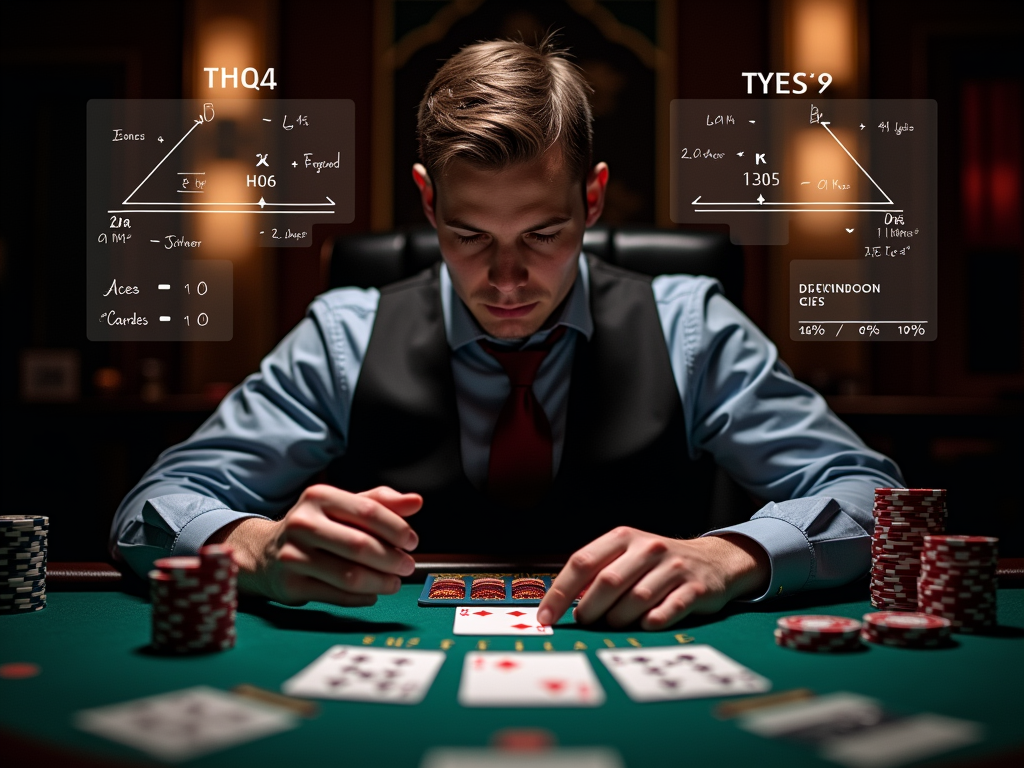
Understanding Card Removal Effects
Card removal effects form the backbone of successful blackjack play, directly impacting your chances of getting strong starting hands and hitting favorable outcomes. In basic blackjack strategy and gameplay, knowing how the removal of certain cards affects probabilities can give you a significant edge.
Single Deck Impact
The math behind single deck blackjack starts with understanding the initial probabilities. An Ace appears 7.7% of the time (4 cards out of 52), while 10-value cards make up 30.8% of the deck (16 cards out of 52). When just one Ace is removed from a single deck, the probability shifts meaningfully—dropping to 3 cards out of 51 remaining cards. This change creates a notable impact on your chances of drawing premium hands like blackjack.
Multi-Deck Considerations
In multi-deck games, the removal effect becomes less dramatic but still matters. Tracking key card values and their frequencies can help inform better decisions. Here’s how different card removals affect your strategy:
- High-value cards (10s, Jacks, Queens, Kings): Their removal decreases your chances of making strong hands and getting blackjack.
- Aces: Removing these significantly reduces your probability of getting blackjack.
- Low-value cards (2–6): Their removal actually improves your odds since more high-value cards remain proportionally.
- Middle cards (7–9): These have a moderate impact on overall probabilities.
The power of card removal in single-deck play creates larger swings in probability compared to multi-deck games. For example, removing an Ace from a six-deck shoe changes the odds from 24/312 to 23/311—a much smaller proportional shift than in single deck play.
These mathematical realities shape optimal playing decisions. Small changes in deck composition can signal when to adjust your bet size or modify your hitting and standing choices. Understanding these effects helps you recognize advantageous situations and adjust your strategy accordingly.
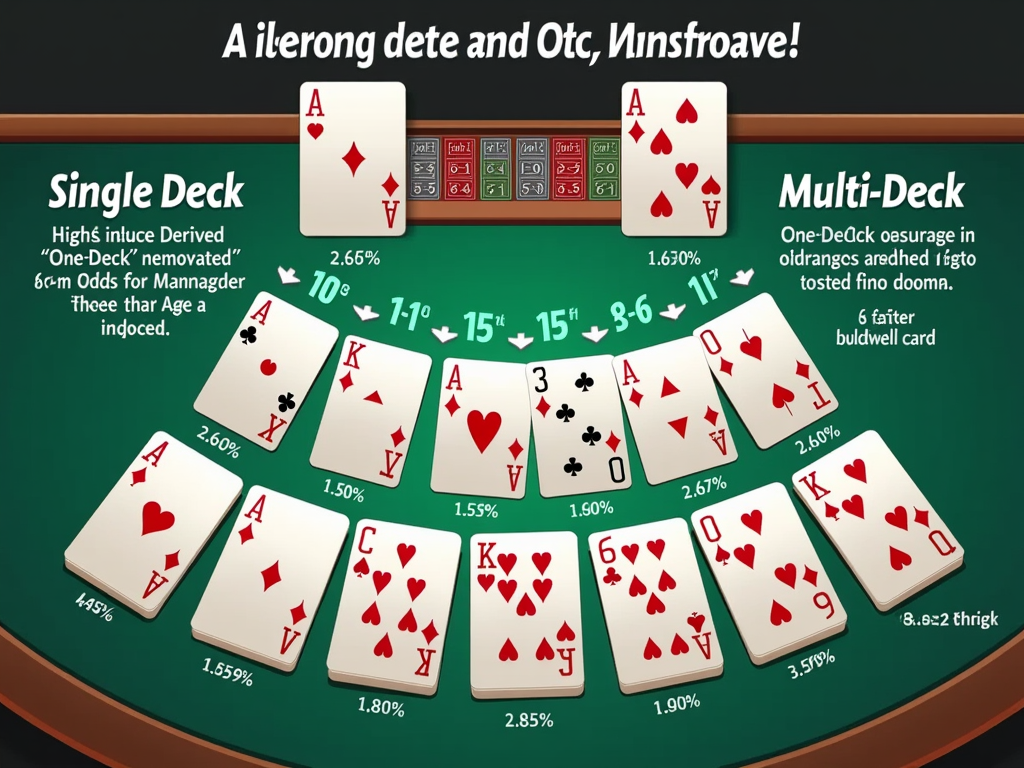
Sources:
wizardofodds.com – “Blackjack Appendix 9”
scoblete.com – “Blackjack Basic Strategy”
investopedia.com – “House Edge”
mensamedia.org – “Casino Gambling Guide”

